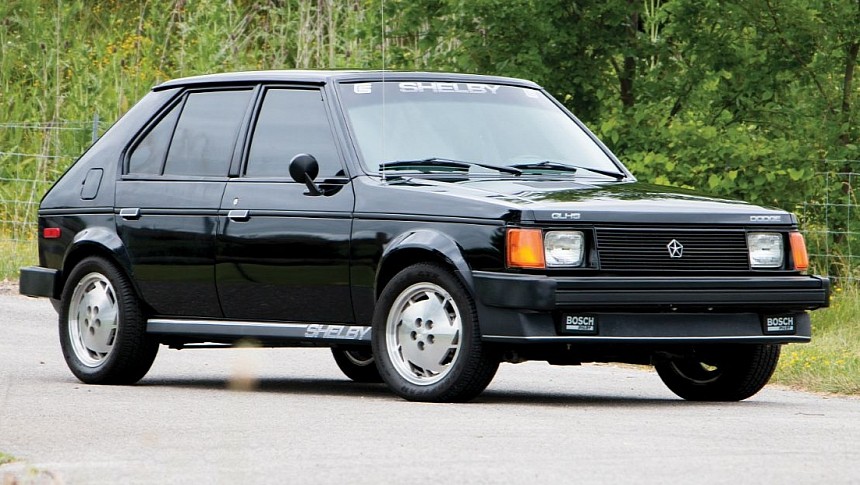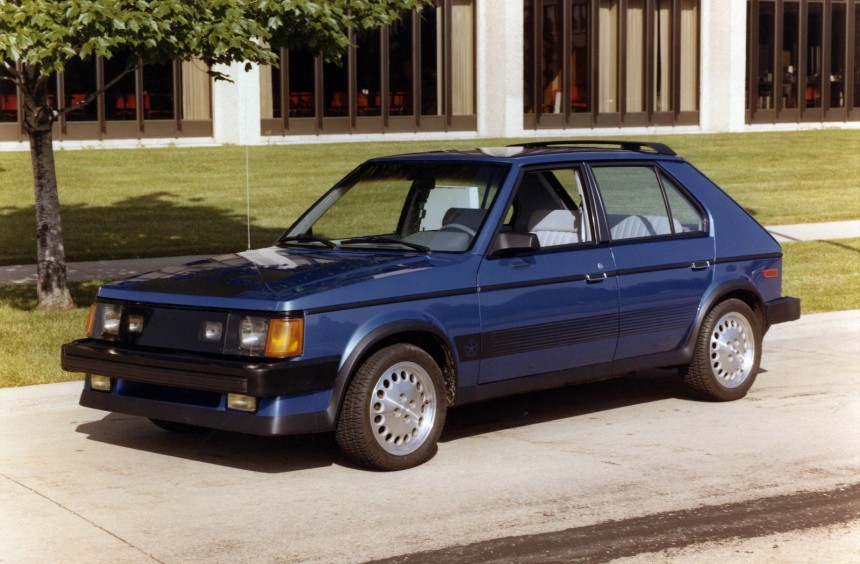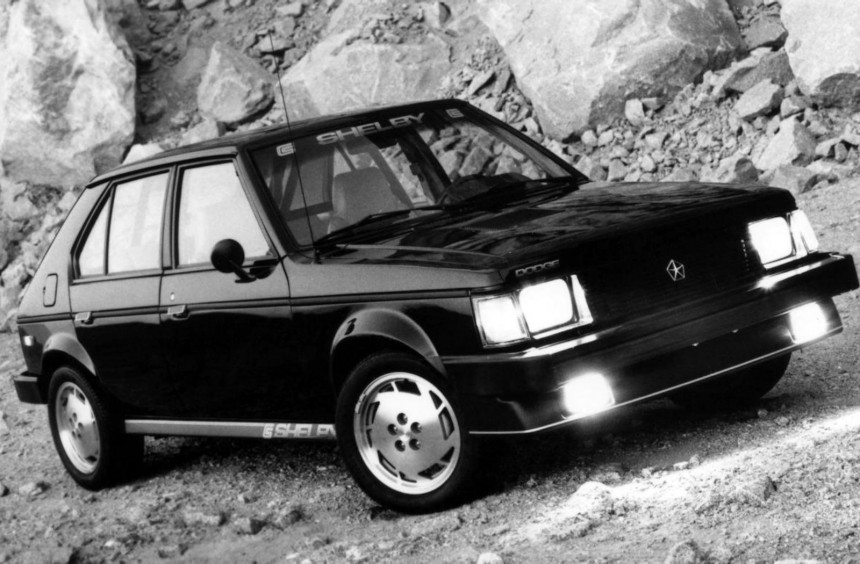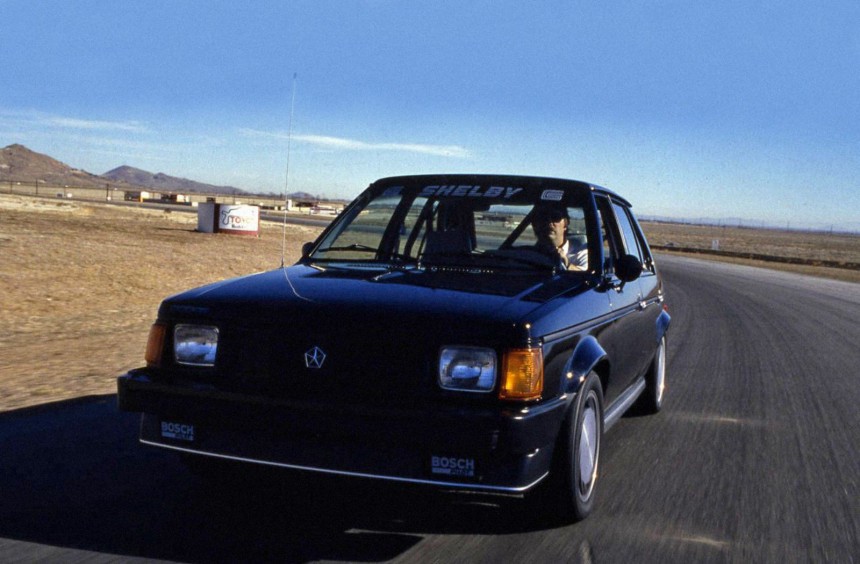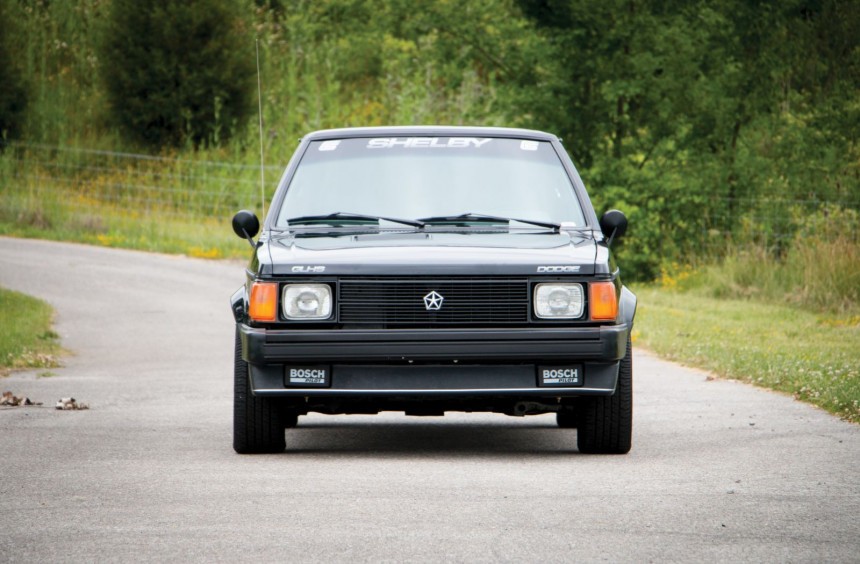Though it went down in history as the ugliest car ever developed by the legendary Carroll Shelby, the Dodge Omni-based GLH-S was one of the quickest, most powerful production hot hatches of the 1980s.
For the average enthusiast, Shelby is synonymous with Ford. The iconic engineer turned the struggling GT40 project into a Le Man's winner, transformed the first-generation Mustang into a thoroughbred muscle car, and developed the Ford-powered Cobra, which remains one of the best American sports cars ever built.
Yet few remember that Carroll Shelby was also involved in the development of some interesting Mopars during the 1980s.
Convinced to come out of retirement by former Ford associate and close friend Lee Iacocca - who became the Chrysler Corporation's chairman - Shelby helped infuse some excitement into the Dodge brand.
It all started with suspension and styling upgrades for the 1983 Dodge Shelby Charger and continued with further refinement of several other Dodge models. Out of these, unquestionably, the weirdest choice was the tiny and painfully boring Omni.
No one will ever blame you if the Dodge Omni doesn't ring any bells. Introduced in 1978 along with its near-identical sibling, the Plymouth Horizon, this little subcompact was a five-door hatchback meant to rival imports like the VW Golf (Rabbit).
No more than an economical people-mover, it was yawn-inspiring rather than awe-inspiring but sold pretty well for about three years. Then, as sales started to decline during the early-1980s, Iacocca thought that a sporty version similar to the Golf GTI would help turn the model's fortunes around.
Shelby was asked (probably begged) to take on this task, and surprisingly, he agreed. The resulting performance-oriented Omni christened GLH (Goes Like Hell) by Shelby himself, was introduced in 1984, boasting a revamped suspension, larger brakes, wider tires, and, initially, a 110-hp four-cylinder.
As you can imagine, it didn't live up to its name, but for the 1985 and 1986 model years, an optional 146-hp turbocharged four-pot became available, allowing the GLH to go like hell - at least, compared to the standard Omni.
Luckily, Shelby wasn't done with the Omni. He purchased 500 GLH units, had them delivered to his California-based factory, and transformed them into a genuine Shelby product called GLH-S (Goes Like Hell S'more).
Compared to the Dodge Omni GLH's suspension, which only received roll bars and stiffer springs, the GLH-S was equipped with higher-performance springs and adjustable Koni shocks.
Furthermore, to slightly enhance its looks, Shelby decals and a set of Shelby Centurian 15-inch wheels with wider Eagle tires were added.
But, unquestionably, the most important upgrades were found under the hood. To make the car even more powerful, Shelby added a bespoke intake manifold and an air-to-air intercooler to the turbocharged 2.2-liter engine.
With these upgrades, boost pressure rose from 9 psi (0.62 bar) to 12 psi (0.82 bar), resulting in an output of 175 hp and a 175 lb-ft (237 Nm) of torque.
If those figures weren't enough, owners could later add the optional MOPAR Performance Stage II computer module, which increased the boost to 14.7 psi (1.01 bar) under wide-open throttle, resulting in 205 hp and 246 lb-ft (334 Nm) of torque.
Although it was by no means a supercar trapped in a five-door hatchback body, the Shelby Omni GLH-S was a brilliant hot hatch that earned universal praise from the automotive press in 1986.
Car and Driver tested the Omni GLH-S on both the streets and the Willow Springs racetrack, concluding it was a much-needed US-built performance car that didn't hesitate to thrill. The publication went as far as saying that the little Shelby could comfortably embarrass contemporary V8 offerings "thanks to what feels like a V-12 under the hood."
Though that was clearly an exaggeration, the 2,540-pound (1,152 kg) Omni GLH-S could sprint from 0 to 60 mph (97 kph) in just 6.5 seconds and run the quarter mile in 14.8 seconds - without the Stage II computer module.
Those figures made it quicker from 0 to 60 than the most potent hot hatches of the 1980s, including homologation specials like the 4WD Lancia Delta HF Integrale (6.7 seconds) of the wild, mid-engine Renault 5 Turbo 2 (7.7 seconds).
As I said before, Shelby only converted 500 Omni GLH units into GLH-S spec in 1986. All were finished in black and could be ordered from select Dodge dealerships for a hefty sticker price of $11,000 ($30,622). The model was followed up by 500 technically similar GLH-S Chargers in 1987.
Today, few remember that this terrific, American-built hot hatch existed, and even fewer appreciate how awesome it was during a dark time for performance cars.
Despite still being one of the finest American hot hatches ever, the Shelby Omni GLH-S is far from Ford-powered Shelbys in terms of collectability. According to Classics.com, the average value of a well-kept, highly original example currently stands at $18,830
So if you're a Shelby fan but can't afford a Cobra or a GT500, the Omni GLH-S is worth considering, even if it's a fundamentally different kind of monster.
If you want to learn more about this weird yet wonderful Shelby and see it in action, we recommend watching the YouTube video below by MyClassicCarTV.
Yet few remember that Carroll Shelby was also involved in the development of some interesting Mopars during the 1980s.
Convinced to come out of retirement by former Ford associate and close friend Lee Iacocca - who became the Chrysler Corporation's chairman - Shelby helped infuse some excitement into the Dodge brand.
It all started with suspension and styling upgrades for the 1983 Dodge Shelby Charger and continued with further refinement of several other Dodge models. Out of these, unquestionably, the weirdest choice was the tiny and painfully boring Omni.
Form Goes Like Hell to Goes Like Hell S'more
No more than an economical people-mover, it was yawn-inspiring rather than awe-inspiring but sold pretty well for about three years. Then, as sales started to decline during the early-1980s, Iacocca thought that a sporty version similar to the Golf GTI would help turn the model's fortunes around.
Shelby was asked (probably begged) to take on this task, and surprisingly, he agreed. The resulting performance-oriented Omni christened GLH (Goes Like Hell) by Shelby himself, was introduced in 1984, boasting a revamped suspension, larger brakes, wider tires, and, initially, a 110-hp four-cylinder.
As you can imagine, it didn't live up to its name, but for the 1985 and 1986 model years, an optional 146-hp turbocharged four-pot became available, allowing the GLH to go like hell - at least, compared to the standard Omni.
Luckily, Shelby wasn't done with the Omni. He purchased 500 GLH units, had them delivered to his California-based factory, and transformed them into a genuine Shelby product called GLH-S (Goes Like Hell S'more).
Thoroughly upgraded
Furthermore, to slightly enhance its looks, Shelby decals and a set of Shelby Centurian 15-inch wheels with wider Eagle tires were added.
But, unquestionably, the most important upgrades were found under the hood. To make the car even more powerful, Shelby added a bespoke intake manifold and an air-to-air intercooler to the turbocharged 2.2-liter engine.
With these upgrades, boost pressure rose from 9 psi (0.62 bar) to 12 psi (0.82 bar), resulting in an output of 175 hp and a 175 lb-ft (237 Nm) of torque.
If those figures weren't enough, owners could later add the optional MOPAR Performance Stage II computer module, which increased the boost to 14.7 psi (1.01 bar) under wide-open throttle, resulting in 205 hp and 246 lb-ft (334 Nm) of torque.
A ridiculously quick and nimble Omni
Car and Driver tested the Omni GLH-S on both the streets and the Willow Springs racetrack, concluding it was a much-needed US-built performance car that didn't hesitate to thrill. The publication went as far as saying that the little Shelby could comfortably embarrass contemporary V8 offerings "thanks to what feels like a V-12 under the hood."
Though that was clearly an exaggeration, the 2,540-pound (1,152 kg) Omni GLH-S could sprint from 0 to 60 mph (97 kph) in just 6.5 seconds and run the quarter mile in 14.8 seconds - without the Stage II computer module.
Those figures made it quicker from 0 to 60 than the most potent hot hatches of the 1980s, including homologation specials like the 4WD Lancia Delta HF Integrale (6.7 seconds) of the wild, mid-engine Renault 5 Turbo 2 (7.7 seconds).
The Shelby Omni GLH-S today
Today, few remember that this terrific, American-built hot hatch existed, and even fewer appreciate how awesome it was during a dark time for performance cars.
Despite still being one of the finest American hot hatches ever, the Shelby Omni GLH-S is far from Ford-powered Shelbys in terms of collectability. According to Classics.com, the average value of a well-kept, highly original example currently stands at $18,830
So if you're a Shelby fan but can't afford a Cobra or a GT500, the Omni GLH-S is worth considering, even if it's a fundamentally different kind of monster.
If you want to learn more about this weird yet wonderful Shelby and see it in action, we recommend watching the YouTube video below by MyClassicCarTV.
